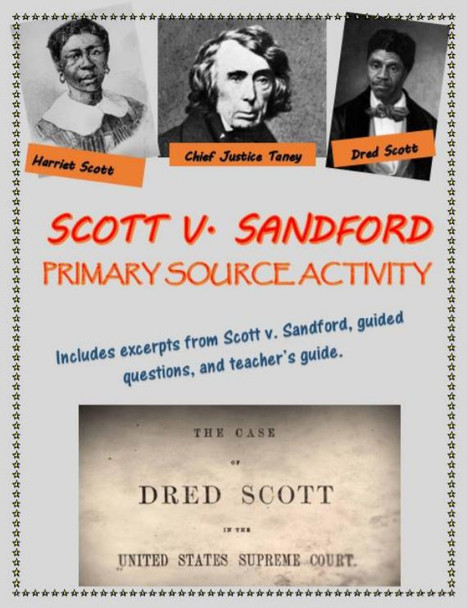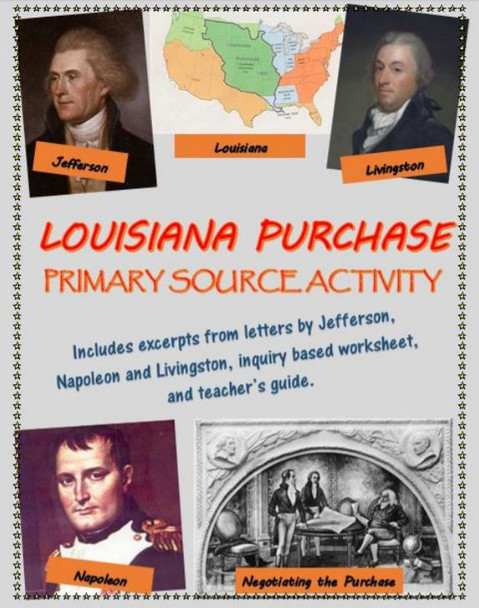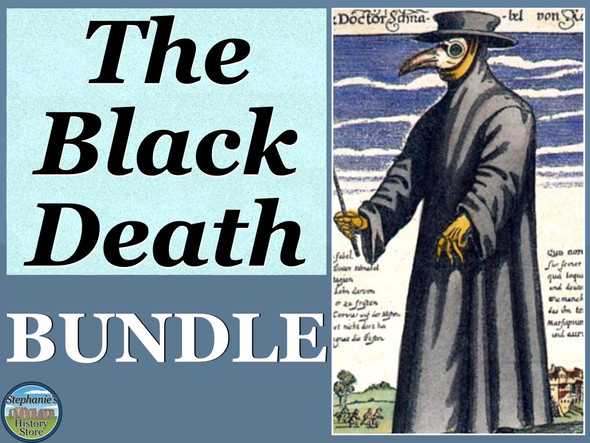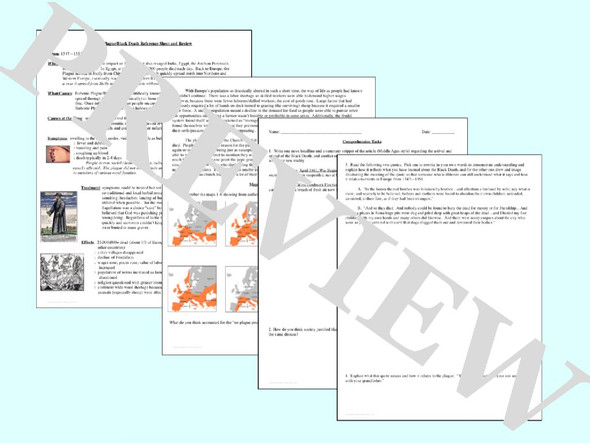Primary Source Activity Bundle - 8 separate activities
- Bulk Pricing:
- Buy in bulk and save
- Contributor:
- Cliff Baker - Ye Olde History Emporium
- Grade Level:
- 7-12
- Product Type:
- Primary Source Bundle
- File Type:
- Pages:
- 80+
- Answer Key:
- No
Description
This activity bundle includes eight popular U.S. history primary source activities from my store:
1. American Slavery
In this activity students will examine a variety of primary source documents concerning this stain on our nation’s history. This is not a pleasant study, for the documents include not only first person accounts of the daily indignities, struggles and horrors of those humans held in bondage, but also the justifications given by those who held people in lifetime servitude. These documents include three first person accounts of former slaves, excerpts of arguments made by slave owners to justify the “peculiar institution,” and excerpts of a speech made by the famous white abolitionist, William Lloyd Garrison.
Materials include:
*teacher’s instructions
*excerpts from the narratives of three former slaves: Mary Reynolds, William Wells Brown, and Frederick Douglass; excerpts of pro-slavery arguments made by slave-owners; excerpts from a speech by William Lloyd Garrison
*for each excerpt, a worksheet with guiding questions directing students to analyze the respective narratives, arguments and speech;
*an answer guide to the worksheet.
2. Declaration of Independence
This activity engages students in deciphering and analyzing the Declaration itself. Students will translate key excerpts from its original language into more easily accessible modern English, identify the sections of the Declaration that the excerpts come from and the specific colonial grievances to which Jefferson referred, and then use those translations as the basis for a discussion of the Declaration’s effect on the American psyche and the world at large.
Materials include:
*teacher’s instructions;
*excerpts from the Declaration, broken up into easily digestible sections on a worksheet;
*an answer guide to the worksheet
3. The Dred Scott decision
In this activity students will read and analyze excerpts from the Court’s majority opinion, answer questions which direct them to analyze the main arguments made by the Court in support of its ruling, and discuss the effect of that opinion on the rights of freedmen after the Civil War.
Materials include:
*teacher’s instructions;
*excerpts from the majority opinion from Scott v. Sandford;
*guided question worksheet; and
*answer guide with suggested answers to the guided questions.
4. The Federalist Papers
This activity engages students in deciphering and analyzing four of these letters; two provide arguments (one pro and one con) concerning the absence of a Bill of Rights in the Constitution, and two (one pro and one con) concern the size of the new Republic. Students will translate the arguments, answer questions which focus their attention on the main points made by the authors, and provide the basis for a discussion and debate over which argument[s] are more compelling.
Materials include:
*teacher’s instructions;
*excerpts from Federalist Papers 14 and 84, and Anti-Federalist Papers 1 and 2, including guided questions;
*answer guide with suggested answers to the guided questions.
5. The Gettysburg Address
This activity engages students in deciphering and analyzing this iconic speech. Students will translate the entire speech from its original language into more easily accessible modern English, and then use those translations as the basis for a discussion of Lincoln’s meaning.
Materials include:
*teacher’s instructions;
*the entire speech, broken up into easily digestible excerpts on a worksheet;
*an answer guide to the worksheet
6. The Louisiana Purchase
This activity engages students in deciphering the letters which outlined the thinking behind Jefferson and Napoleon’s secret negotiating strategies, as well as in examining Livingston and Monroe’s private justification for their actions as they sent the treaty back to the United States for approval. The documents include: excerpts of the actual instructions sent by Jefferson to Livingston, explaining the urgency behind Jefferson’s burning desire to acquire New Orleans; excerpts of the secret instructions given by Napoleon to his negotiator, Maurice de Tallyrand, explaining all of the reasons why he now desired to unload the entirety of Louisiana onto the Americans; and excerpts from Livingston and Monroe’s letter home to Secretary of State James Madison, explaining their reasons for agreeing to the purchase.
Materials include:
*teacher’s instructions
*excerpts from letters by Jefferson, Napoleon, and Livingston and Monroe
*a worksheet with guiding questions directing students to translate the letters into modern English and analyze their contents
7. Plessy v. Ferguson and Brown v. Board of Education
In the 1896 case of Plessy v. Ferguson the Supreme Court ruled that segregation of races in public life was perfectly legal under the doctrine of “separate but equal.” This ruling legitimized Jim Crow laws and second-class citizenship for generations of African-Americans. Finally, in 1954, the Supreme Court reversed itself in the case of Brown v. Board of Education and banned the “separate but equal” doctrine, finally paving the way for true equal rights for African-Americans, nearly 100 years after the end of the Civil War.
Plessy marked the final death blow to any lingering hope for equality and civil rights following the Civil War and Reconstruction; Brown rekindled that hope following the global struggle against fascism and tyranny that had been World War II. Along with the Dred Scott and Bakke decision, these two cases are seminal rulings concerning race relations in this country.
In this activity students will read and analyze excerpts from the Supreme Court opinions in the 1896 case of Plessy v. Ferguson and the 1954 case of Brown v. Board of Education, and answer questions which focus their attention on the main arguments made by the Court majorities, and discuss the ideological and legal bases for those arguments and the Court’s Opinions.
Materials include:
*teacher’s instructions;
*excerpts from the majority opinions from Plessy v. Ferguson and Brown v. Board of Education;
*guided question worksheets;
*answer guide with suggested answers to the guided questions.
8. Native Americans and the Revolutionary War
The American Revolutionary War presented a particularly sticky problem for Native Americans east of the Mississippi. While most tribes simply wished to remain neutral in a conflict that they did not understand, American and British agents were both busy trying to get Indian tribes bordering the colonies to take certain actions. The Americans, for the most part, encouraged the large Iroquois Confederation to remain neutral; English agents, for the most part, tried to get their former allies to join them in fighting the colonists. These meetings between tribal leaders and the white negotiators most often took place at tribal council meetings where, in accordance with Indian oral tradition, the interested parties would make speeches outlining their requests and responses.
The ability to make impressive speeches was a very important part of being an Indian leader. Indians could give hours long speeches without any notes, and their best speakers were given high status in the tribe. For white agents, therefore, it was also important to be accomplished public speakers so that the Indians would respect them.
In this activity, students will read and analyze excerpts of some of these speeches, answering questions about each speech as they are analyzed.
Materials include:
*teacher’s instructions;
*excerpts from five speeches, including questions directing students to analyze their content;
*an answer guide to the questions
Created by Cliff Baker - Ye Olde History Emporium


























